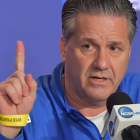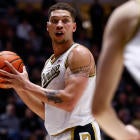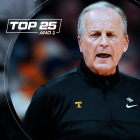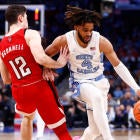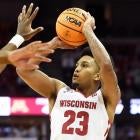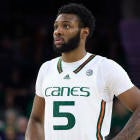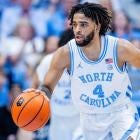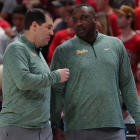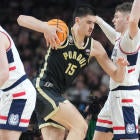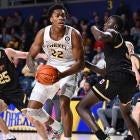A Monday morning teleconference with SEC basketball coaches yielded yet another opportunity for Kentucky coach John Calipari to speak about the possible landscape shift that's coming to college basketball.
Calipari reiterated, as he told me recently, that he's OK with a baseball model for college basketball. But he also emphasized his concern for "the kids" on Monday's media call.
"If they're trying to get kids in high school to go to the D-League, I will be shouting from mountaintops saying, 'What is this going to do to a generation of kids who say, 'Alright, I'm going to do this,'" Calipari said. "You get one or two years to make it and now you're out without any opportunities. Who's taking care of those kids now?"
As Frank Martin, and many others, told me in June: It's not college basketball's responsibility to be the safety net. And the NBA hasn't traditionally been one to look after its failed projects. So if the NBA is going to shift the way it allows teenagers to enter into its league -- by way of the draft, through the G League, or elsewhere -- it's going to have undeniably big ripple effects on how college basketball is recruited and who its stars become.
"Back in the day when they started raising these standards, I was like, 'Boy, I don't know if this is good because I think we're going to lock out a whole group of kids,'" Calipari said. "So, what the NCAA did was challenge kids to do well. If you really want to do this and go to college and have a gap year and prepare, or maybe stay at school two or three of four years, you gotta get up to these standards. Well, I thought it would shut people out. Very rarely do I speak highly of the NCAA, but in this case what it did was it challenged a generation of kids to do better academically, to be on point, to get themselves where they need to go."
Calipari is referring to both the APR and the raised NCAA Clearinghouse standards for eligibility coming out of high school and/or preparatory school. The impetus behind Calipari's concerns stem from this possibility: If players are eligible to go from high school, but only to the newly branded G League, then how does that help protect the player other than to give him autonomy of life choice at the age of 17 or 18?
Auburn coach Bruce Pearl, who also said he supports the baseball model, is advocating heavily for college because -- and he has a point -- it is still, by far, the most effective way to prepare a player for being a professional.
"Cal's had 17 [lottery picks]," Pearl said. "You could take any one of them, nobody knew who De'Aaron Fox was from Texas or Bam Adebayo from South Carolina, until one year of Kentucky, and boom they've got a brand."
Pearl is correct that players who attend Kentucky, Duke, UCLA, etc., they all get a certain amount of media exposure and spotlight lifestyle that acts as a dress rehearsal for the very different everyday experience of being an NBA player. That has real value, and benefits the player as much as it possibly could -- short of actually getting paid.
"The basketball training is way better than anyone wants to give it credit for, the social training is more than that," Pearl added. "There is a legitimate educational component in two factors. ... "I'm more concerned about the G League and their ability to take kids and get them to the NBA, more than I am about the baseball rule."
Pearl and Calipari agree on this end. Now, is it in their self interest? Yes. That has to be acknowledged. But being cynical about it doesn't mean that Calipari hasn't experienced firsthand how he's changed players' lives, and so it's natural for him to feel like losing that would both hamper his career and potentially damage the long-term prospects of future would-be recruits.
"Right now, the way to get to the NBA is through college," Pearl said. "If we do anything to lose that, then we're going to jeopardize this component. Last year, the graduation rate in men's basketball for African-American student-athletes was the highest it's ever been. It has increasingly gotten better and better and better for lots of reasons. The APR, the support that we receive. But college is still the way to get to the NBA, so seventh- and eighth-grade parents are going into schools making sure their kids are taking Algebra 1 as a freshman and they're making sure they're getting qualified. In many ways we've helped improve the education process through this process. If you now allow the G League to be the way to get to the NBA, which is being discussed as being part of the way to do away with one-and-done. That is going to maybe, really do damage to the culture we've created and that is you got to get your books to get your basketball."
The NBA needs to comes to terms with whether or not this is a problem it cares to deal with. If you open up the door to allow players to enter the league at 18, even if it's strictly through the G League, there are bound to be cases where kids skirt the edges in high school and target entry to a professional contract as early as possible. To counter this, look at the past 11 years and see how college basketball, and the NBA, have become more well-rounded in terms of the player pool at large.












